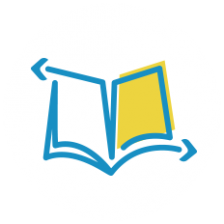The RTI framework is used for all students, not just for those in special education programs. In fact, the majority of RTI strategies and interventions occur in the regular classroom because it’s the broadest section with the most students. In addition, any student can receive interventions found in all three tiers of the RTI framework without being in a special education program. While there is a bit of overlap, there is a difference between RTI and special education.
The RTI Continuum
You can think of RTI as a continuum. At the lowest end of the RTI framework, many students in the general classroom are given small interventions. Most students respond favorably to them and no other interventions are needed; however, if they don’t demonstrate progress, more intensive interventions are tried (a move upward on the continuum). At the highest end of the framework, a small number of students are given intense interventions; often, this takes place through special education, but that is not always the case. Students with medically diagnosed disabilities, such as a visual or hearing impairment, don’t go through the RTI process to be considered for special education, but others, like those with a specific learning disability (SLD), do. RTI is mentioned in the federal law, IDEA, only in the category of specific learning disability (SLD) to help identify a disability.
The key is finding the level at which the student responds to the intervention. If your child responds to interventions at a certain level, then there is no need for him or her to receive services at a higher level. However, it’s important to note that no level of intervention is synonymous with special education, and that interventions at various levels can be administered both in and outside of the general classroom.
RTI as a Means of Screening for Special Education
In addition to finding ways to help students succeed, RTI can be used to help to determine whether or not a student has an SLD. It can be difficult to discover why a student isn’t making adequate learning progress, especially when there is no medical test to determine a SLD, and RTI is helpful as a way to solve problems and find interventions that work. RTI can also prevent over-identification of children eligible for special education; however, it can’t be used to delay a student’s evaluation for special education if there is a suspected SLD, nor should it be used as the only way a student that is screened for special education.
RTI and Adequate Yearly Progress
All students, including those in special education programs, must demonstrate adequate yearly progress (AYP), under No Child Left Behind 2001. (Prior to this legislation, many students receiving special education services were exempt from state testing.) For this reason RTI interventions are now utilized in conjunction with regular classroom instruction and special education programs; in addition, some interventions and programs that were once reserved only for special education students are now available to students who are struggling but who do not qualify for special education.
Due at least in part to AYP, the most targeted, specific use of interventions and school resources are assigned to special needs students. For example, a student who receives special education services might be assigned to see outside personnel, such as a psychologist or speech therapist. Students with more severe disabilities often need more costly interventions, such as braille books, wheelchairs, one-on-one teaching, an aide, an interpreter, special technologies or parent-family training to attain AYP. These targeted, intense interventions are used to help students with special needs achieve success in curricula that is appropriate for their age and their grade-level.





